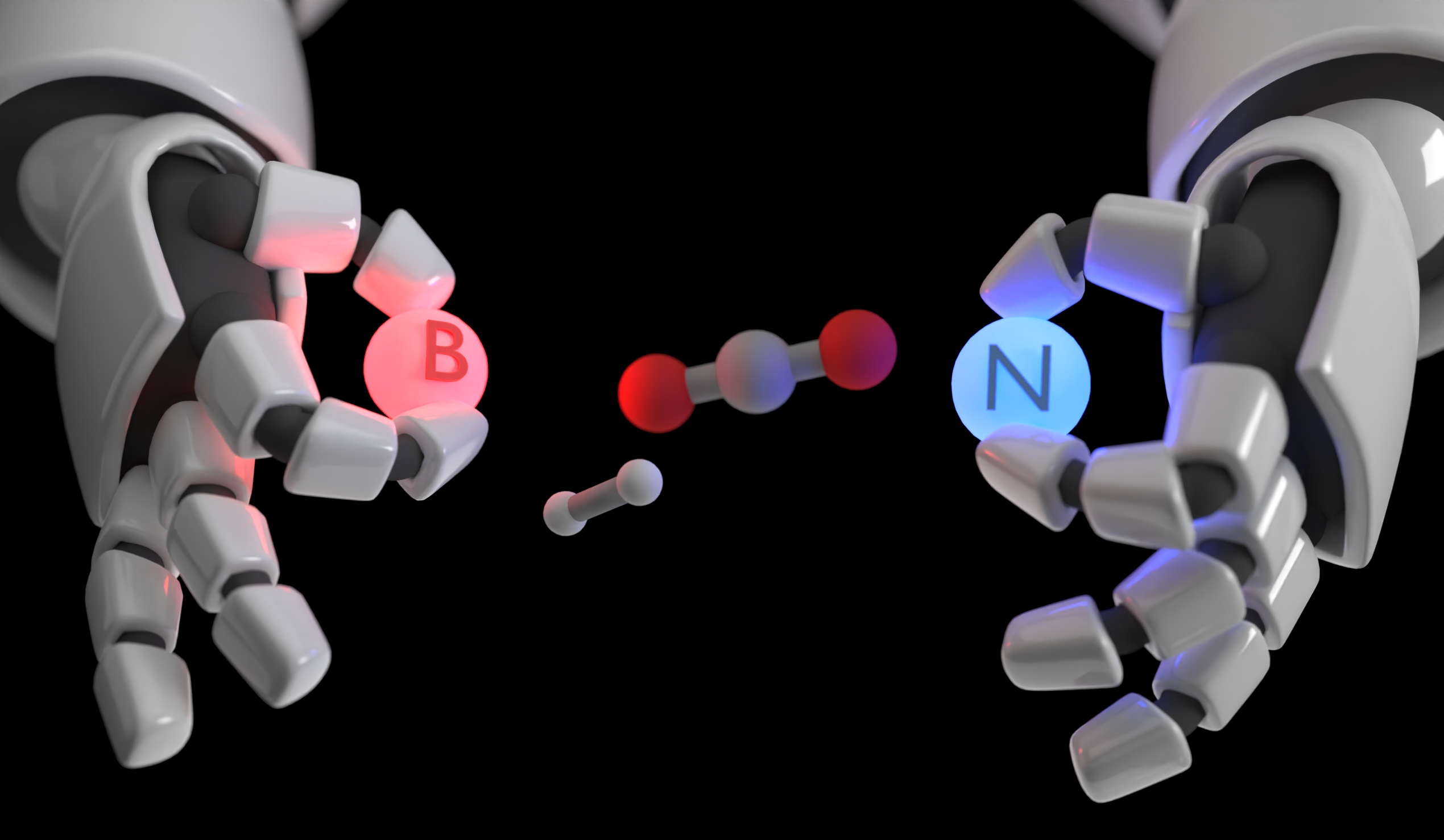Tools for Predicting the Activity of Immobilized Frustrated Lewis Pair Catalysts
Developing and implementing tools for rapid estimation of catalyst performance can significantly expand the search space and accelerate discoveries. We present a computational framework for predicting the activity of a catalyst based on its minimal active site information. Our approach relies on establishing linear and nonlinear scaling relationships for mapping the chemistry/ geometry of the active site to their activity through intuitive electronic/structural descriptor variables. The resulting maps then guide us to recognize "sweet spots" in the respective descriptor spaces that fulfill the criteria for maximum activity. As such, these tools can be applied for extensive exploration of thousands of molecules and materials for the design of optimal catalytic environments to drive highly sought-after chemical transformations.
The ability of this framework is demonstrated with the challenging discovery of immobilized frustrated Lewis pairs (FLPs) [1,2] for the hydrogenation of CO2. Since such catalysts feature a bifunctional active site with rigid donor and acceptor units, catalytic behavior is determined by their chemical as well as geometric composition. By constructing relevant activity maps and analyzing them, we show how to maximize performance by manipulating the chemistry of the Lewis pairs and controlling their spatial arrangements. [3,4] Utilizing the chemistry and the geometry-based tools together, we create a pipeline for rapid screening of curated databases of FLPs to not only identify promising combinations but also to formulate concrete design principles for building such hybrid active sites.

[2] Yin Zhang, Pui Ching, Lan, Kyle Martin and Shengqian Ma, Chem Catalysis 2, 439–457
[3] Shubhajit Das, Ruben Laplaza, J. Terence Blaskovits, Clémence Corminboeuf, Angew. Chem. Int. Ed., 2022, doi: 10.1002/anie.202202727
[4] Shubhajit Das, Ruben Laplaza, J. Terence Blaskovits, Clémence Corminboeuf, manuscript under preparation